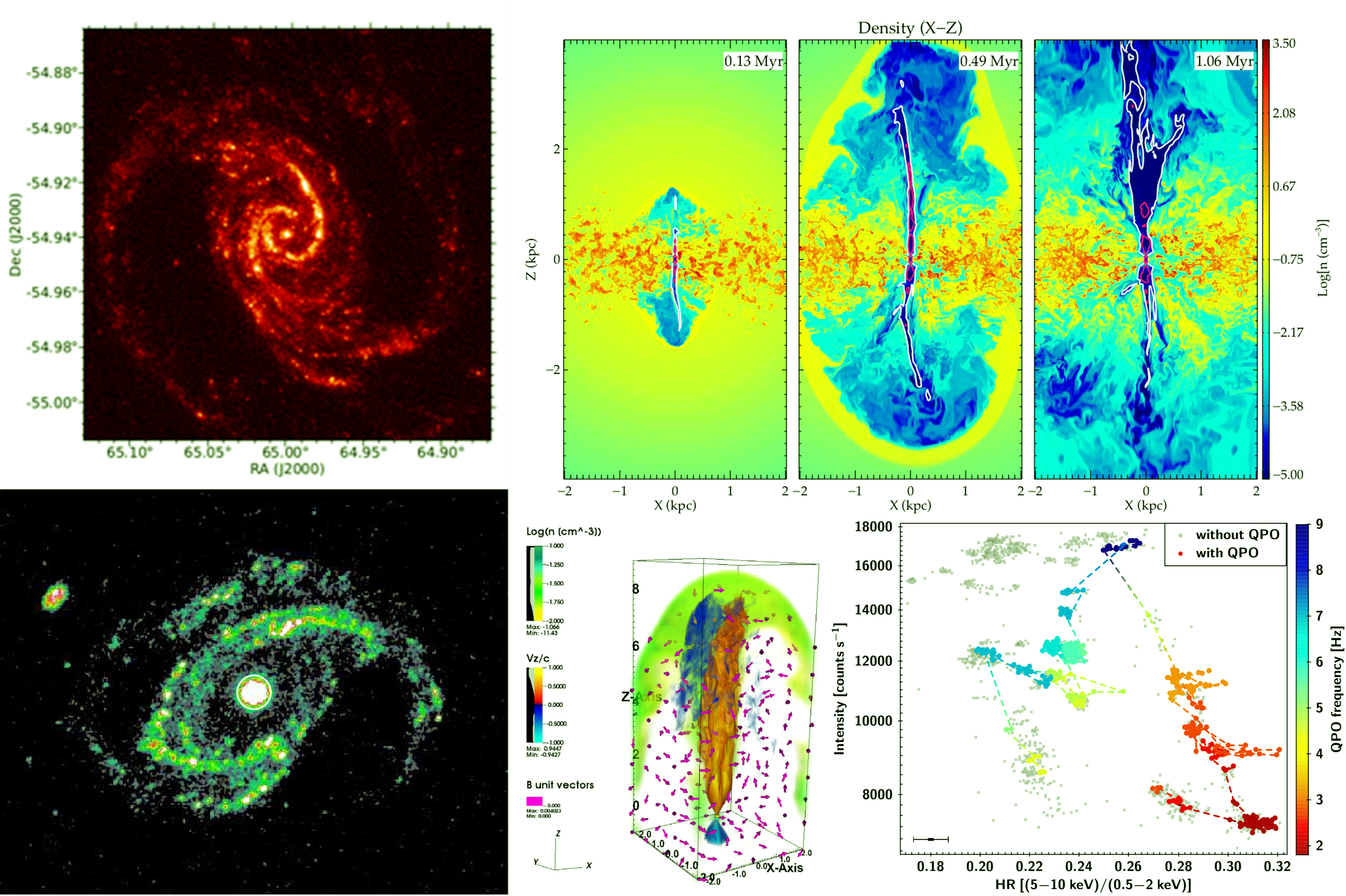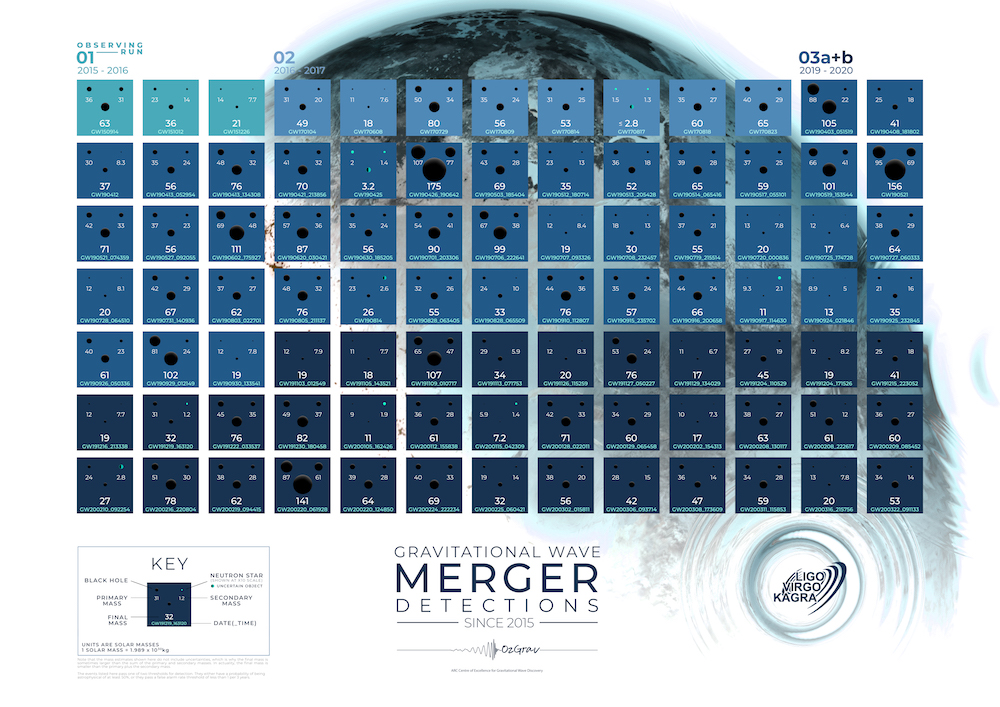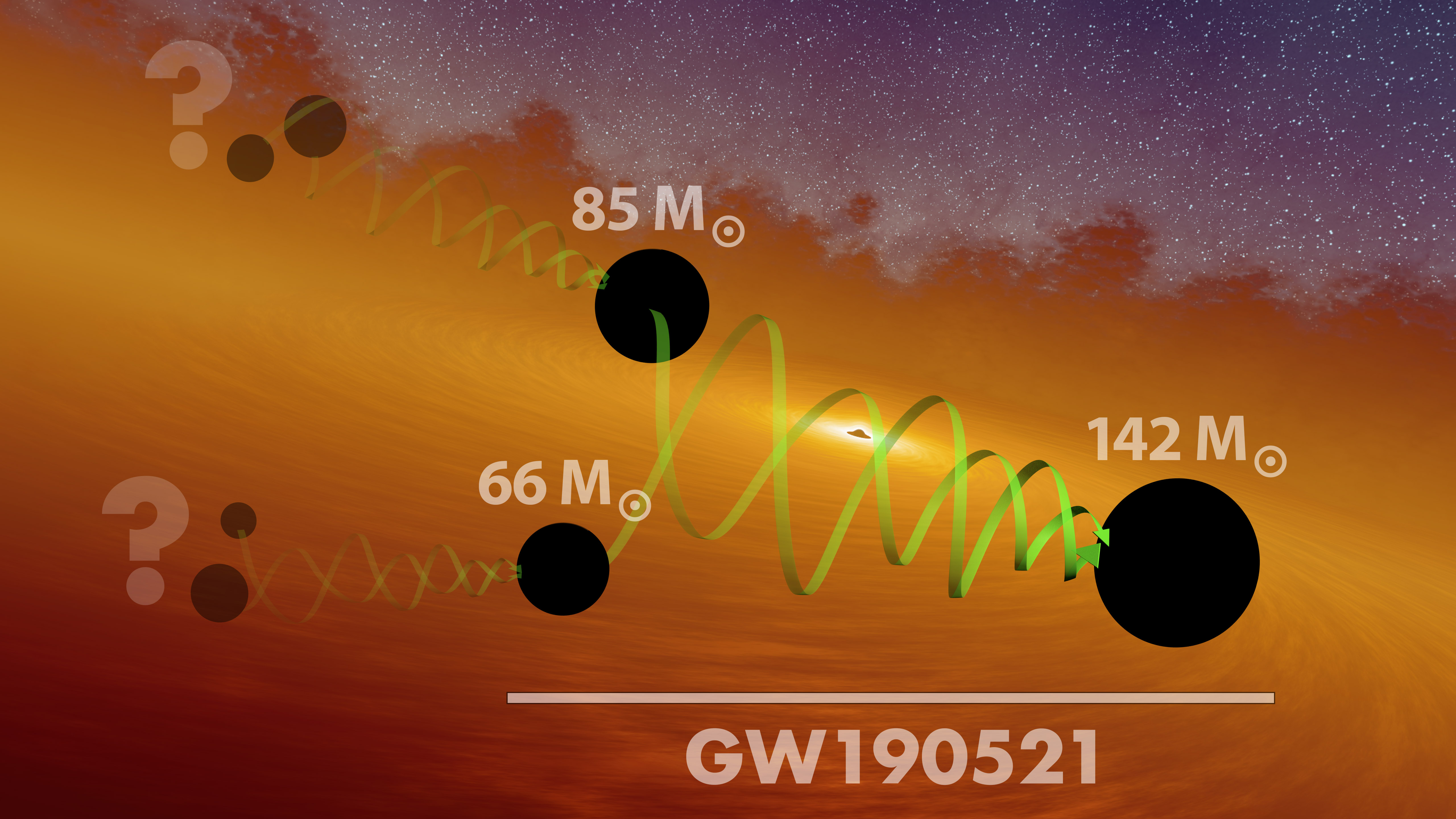Uncategorised
Instrumentation for Astronomy
The laboratory is involved in developing a number of science instruments for astronomy applications from ground and space. New technologies are also developed as part of R&D activities including the use of optical fibres for 2D spectroscopy, sensor electronics, adaptive optics systems etc. The instrument and technology development programmes are integrated into several national and international collaborative projects.
High Energy Astrophysics

IUCAA has a very diverse and active research group in the area of High energy astrophysics where faculty members work on multiple aspects related to the hot and energetic universe. The group is actively involved in several ongoing and next-generation X-ray space missions. An overview of the different topics is given below:
- AGN: Active Galactic Nuclei (AGNs) are the most luminous sources in the Universe, which emit across the entire electromagnetic wavelength from radio to gamma-ray. The bolometric luminosity of an AGN ranges from 10^42 to 10^47 erg s-1. A considerable fraction of this bolometric luminosity arises from the accretion disk in the optical/UV band and hot corona in the X-ray band. It is believed that the accretion disk emits thermal photons via accretion of matter from the host galaxy onto a central supermassive black hole. A fraction of these thermal photons then interact with the high-energy electrons of the corona and are up-scattered to the X-rays. The X-ray emission from the corona illuminates the accretion disk and interacts with the disk matter via photo-electric absorption, Compton scattering, fluorescent line emission, and bremsstrahlung processes, and gives rise to the emission lines and reflection spectrum. The interplay between the disk and corona emission provokes a complex spectral and temporal behavior of AGNs. At IUCAA, researchers are continuously working to understand the nature of the disk/corona emission and their causal connections by performing spectral and timing analyses using the multi-wavelength data acquired by various space-observatories such as AstroSat, XMM-Newton, Suzaku, Chandra, Swift, and NuSTAR.
- Blazars: Blazars are sources where the powerful jet of an AGN is oriented such that it is pointing towards us. Blazar spectra are dominated by the jet emission in all wave bands and are highly variable. The emission mechanism is due to synchrotron, synchrotron self-Compton and external photon Comptonization of non-thermal particles. The origin of the jet, its energy source and the physical processes by which the non-thermal particles are produced are largely unknown. At IUCAA, researchers are studying the broad band energy spectra as well as the variability of these sources, to understand these physical processes. This involves detailed data analysis of different wave-bands, developing theoretical models that can explain both the spectra and the variability, and statistical techniques to test them against data.
- Compact Objects: X-ray binaries are systems where a black hole or a neutron star accretes matter from a companion star. The matter forms an accretion disc around the compact object which in the inner regions produces X-rays. Since the X-rays are produced near the black hole/neutron star they provide important clues to the behavior of matter under the influence of strong gravity and the system becomes a laboratory to test the predictions of General Theory of Relativity. These sources are also highly variable on time-scales ranging from decades to milli-seconds. The rapid variability implies emission close to the compact object and understanding its origin would enable us to map the extreme space time geometry. Scientists at IUCAA study in detail the X-ray spectra of these sources and the rapid variability, by developing and implementing sophisticated and efficient analysis techniques, as well as constructing theoretical models to explain the extreme phenomena.
- Population studies of compact objects: Population studies of compact objects like white dwarfs, neutron stars and black holes provide a bridge between stellar physics, galactic astronomy, and cosmology. In the Milky Way, they give detailed local insight into stellar evolution and Galactic history. In external galaxies, they provide statistical samples to understand how environment and galaxy type influence compact object formation and evolution. The group at IUCAA is involved with large X-ray surveys to study population of compact objects with eROSITA, XMM-Newton, Chandra , Swift and NuSTAR observations. Additionally, the group at IUCAA is involved in multi-messenger astronomy and studying the possible association of gravitational wave transients with AGNs and a combined population study.
- Novae and masses of white dwarfs: Nova is a sudden, bright burst of electromagnetic radiation from a binary system where a white dwarf accretes matter from a companion star, leading to a thermonuclear runaway reaction on its surface. While often discovered in the optical band, their X-ray emission provides the most direct insight into the nuclear burning on the white dwarf’s surface. These X-ray observations allow to probe fundamental physics: accretion processes, surface temperatures, and the timescales of nuclear burning. Further, the duration of the "supersoft X-ray phase" of the nova is a robust indicator to the white dwarfs mass. If the white dwarf is growing in mass toward the Chandrasekhar limit, it could eventually trigger a Type Ia supernova one of the most violent explosions in the universe.
- eROSITA: In particular, eROSITA X-ray telescope aboard the SRG mission has created the first map of the hot, energetic universe which contains over one million X-ray sources. This has doubled the number of sources discovered in the entire 60-year history of X-ray astronomy. The high energy astrophysics group at IUCAA is actively involved in the compact objects working group under the eROSITA-DE consortium to understand the compact X-ray source population in the Milky Way and nearby galaxies.
Gravitational Waves
Gravitational waves are perturbations that propagate like ripples in space-time fabric. They will not only allow us to test the predictions of General Relativity in regions of strong gravity, but will also serve as a tool to expand our understanding of the Universe. Direct observations of gravitational waves are being pursued by an international network of advanced (second generation) laser interferometric detectors. Presently a significant amount of effort is being devoted by this research community in developing algorithms and data analysis pipelines to efficiently search for gravitational wave signals in noisy data. Compact binary coalescences are interesting as sources of gravitational waves because their rates are expected to be favorable and their phases can be modeled to a very high accuracy, so that matched filtering can be used to search for them.

The detection of gravitational waves from binary neutron star mergers, in coincidence with multi-wavelength electromagnetic observations, has opened up a new era of multi-messenger astronomy. Together they allow us to probe the interior composition of neutron stars, and in turn to study the properties of dense nuclear matter under extreme conditions that are otherwise inaccessible to terrestrial experiments. Not only binary mergers, isolated neutron stars too can undergo oscillations when perturbed, which emit continuous gravitational waves. Such oscillation modes have also been conjectured to be excited in the post-merger ringdown phase of binary coalescence, and could also influence their tidal coupling. The oscillation frequency and damping times of such stellar oscillation modes, obtained from gravitational wave signals, depend on the internal composition of neutron stars and will allow us to constrain the nature of dense matter.
Gravitational waves, however, can probe a much wider range of known and (so far) unknown sources, where the phase evolution in most of cases is unmodeled or ill-modeled. A Stochastic Gravitational Wave Background (SGWB) is one of such source, which can be created by overlapping GW signals from unresolved astrophysical sources in the nearby anisotropic universe. A weaker isotropic SGWB is also expected from GWs produced in the early universe. Gravitational wave researchers in IUCAA work on astrophysical and cosmological aspects of both types of sources and on devising methods for detecting them.

At IUCAA, gravitational wave sources (burst, continuous and stochastic) are being studied in great detail in apprehension of the planned third-generation gravitational wave detector LIGO-India. The analysis of data from the currently operational and future planned detectors will allow useful extraction of physics from such sources.
Time-delay interferometry must be used for space-based detectors such as LISA to achieve the requisite sensitivity. Algebraic geometric methods have been employed to cancel the laser frequency noise. Alternative approach is to use matrix representations. This work is being carried out at IUCAA.
Since IUCAA is one of the nodal institutions of the LIGO-India megascience project, IUCAA has an active training and R&D program in the field of Gravitational Wave detectors and related instrument Science. Several laboratories are presently under development to house this activity both within IUCAA and in the SP Pune University campus. Training and research in experimental optics, electronics and mechanics aspects of the interferometric gravitational wave detectors are currently being pursued. This program is primarily directed at preparing a team which can take on the tasks of installation, commissioning and operation of the LIGO-India detector. In addition, efforts are underway to pursue advanced research which aims to contribute to future 3rd generation GW detectors. For further details please see → GW Research Group at IUCAA
Computational Astrophysics
- Astrophysical Plasmas and MHD
- Large imaging surveys for galaxies
- Astronomy applications of Machine learning
Page 7 of 8




